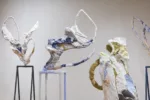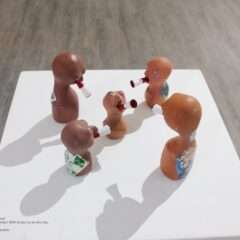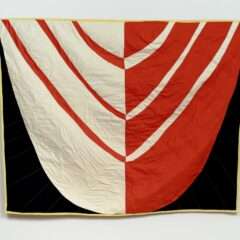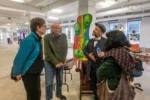Miami Project is a fairly new member of the 22 smaller fairs that circle, like small fish, around the shark that is Art Basel Miami Beach. The dealers are all well-established galleries across the U.S. As usual, I paid attention to the work that was unfamiliar, and found a lot of it interesting.
Rare sketches from Mel Chin
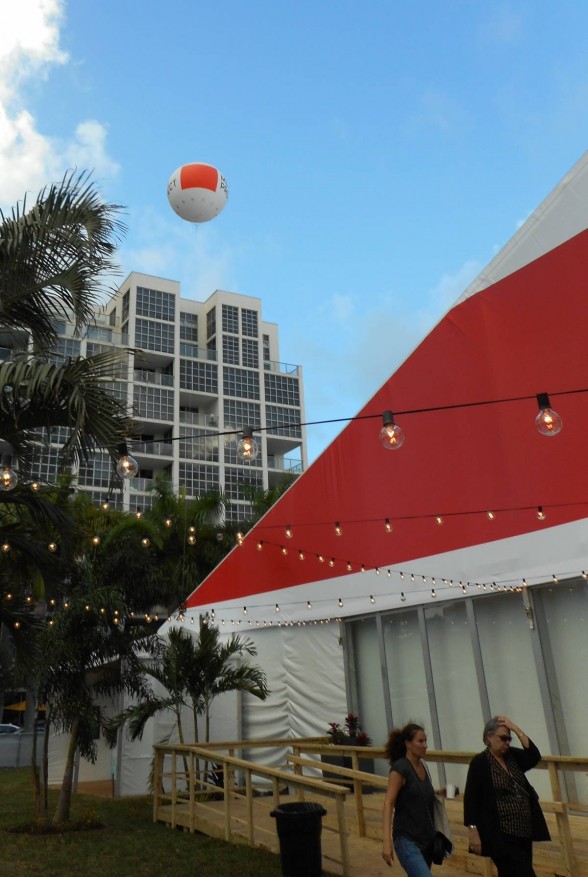
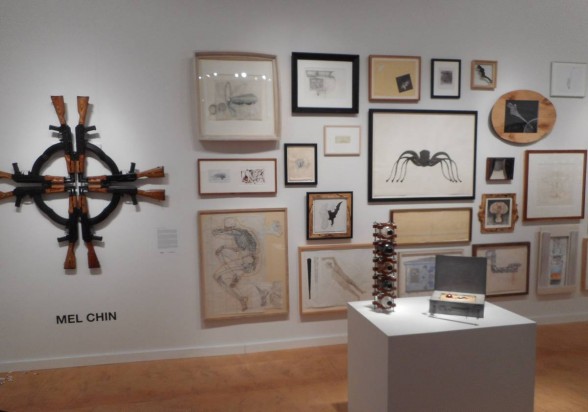
Mel Chin’s work was on view at Jonathan Ferrara Gallery (New Orleans): a wall piece in the form of a cross constructed of eight rifles, two forming each arm, with all eight pointed inward. Let’s hope they stay that way; there’s too much shooting in the name of God and country, law and order.
But it was the large and varied array of drawings on the wall beside them that caught my eye. Chin hasn’t shown his drawings much, all of them studies for his various sculptures and the installations, for which he is best known, which engage their venues in acts of land remediation and other social work. The drawings included a large sketch of a spider, which was on view in a public area at the fair, and others that incorporated human figures, architectural or engineering plans, and a variety of objects on multiple scales. The frames were varied and looked as though the artist had selected them, even if he hadn’t constructed them all. It formed such an interesting wall that I had to inquire whether the grouping formed a single work. No.
Engaging work by Dave Eggers
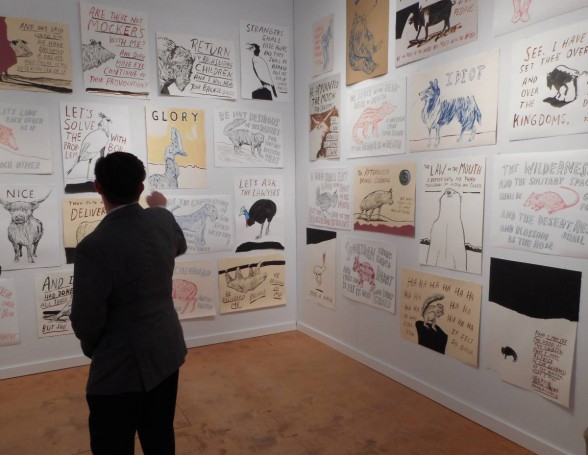
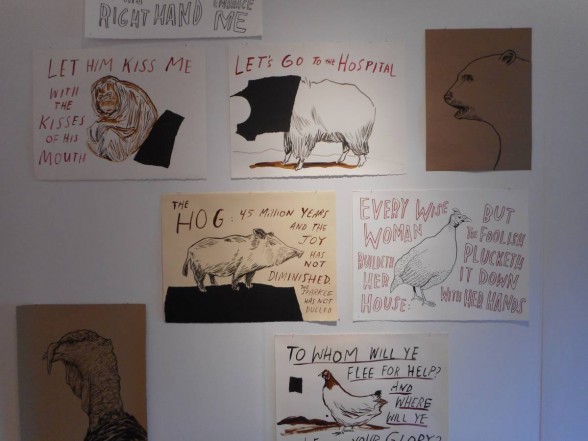
The walls of Electric Works (San Francisco) were papered with pinned-up drawings and paintings on paper by Dave Eggers–yes, the writer–that made a terrific impression on everyone who saw them. Eggers studied art before turning to writing, and it showed. All the works included animals and fell into two types: those with the animals alone–portraits, more or less–and others in which the animals were surrounded by phrases and sayings. Some of the texts were Biblical, others not, but all shared an admonitory tone: the sort of thing one might see on a roadside sign in the Bible Belt. I inquired whether Eggers was a believer or being ironic, and his dealer didn’t know. I suspect that favors irony, since believers I’ve met are fairly straightforward about it.
Joan Mitchell’s drawings; George Adams surprises
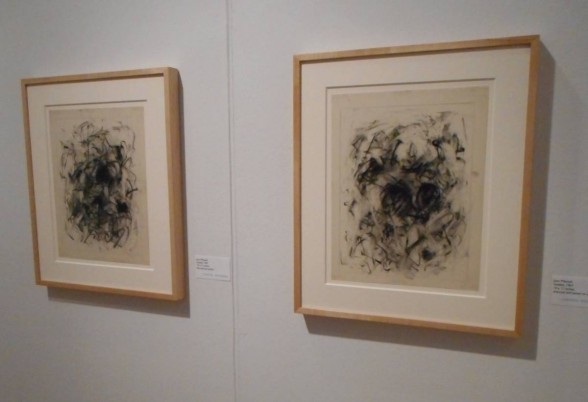
Two small, charcoal drawings attracted my attention from a 30-foot distance. They turned out to be by Joan Mitchell. The staff at Lennon, Weinberg (New York), where they hung, said Mitchell had rarely exhibited her drawings–that wasn’t the way for a woman to be taken seriously during the heyday of big, gestural paintings–and had never shown these. I’d have happily taken one home.
I don’t know why it was that many works that caught my eye were drawings. I’m happy that the medium has become fashionable, whether as preparatory or finished work. Drawings have an immediacy that appeals, as well as prices that are more democratic than paintings.
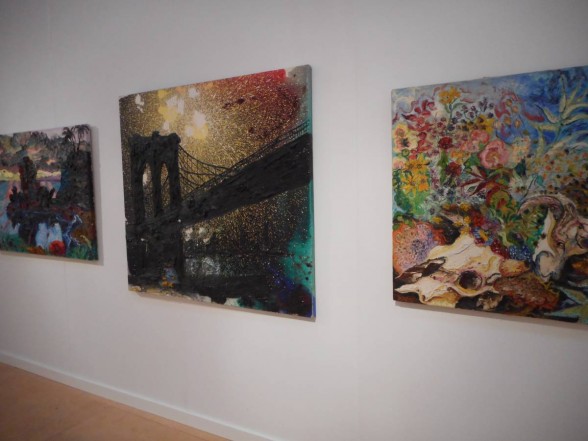
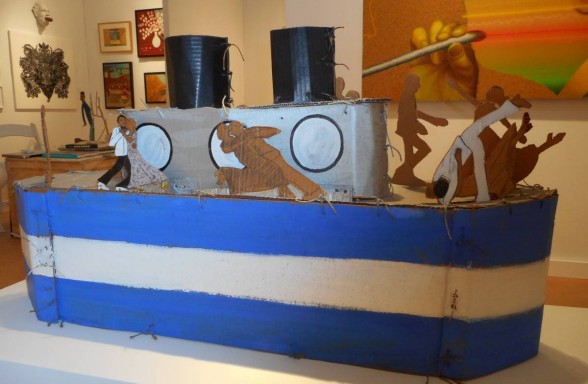
George Adams (New York) was showing a range of eccentric figuration that he’s been involved with over long periods when it was ignored by many in the art world–other than James Demetrion, former director of the Hirshhorn. Among the more familiar work was a delightful, cardboard construction by Joan Brown of figures dancing on the deck of a cruise ship (I didn’t check the title and hope it wasn’t the Titanic).
I knew of Peter Dean’s work, but this was the first I’d seen his lush, heavily impasted paintings. They include figures in spaces with no pretext toward traditional perspective, painted in a broad palette of deeply saturated colors. Dean currently has a solo exhibition on view at the gallery, with a painting I’d like to see, used as the announcement: “The Assassination of Malcolm X” (1981).
Lauren Di Cioccio’s biomorphic fabric forms
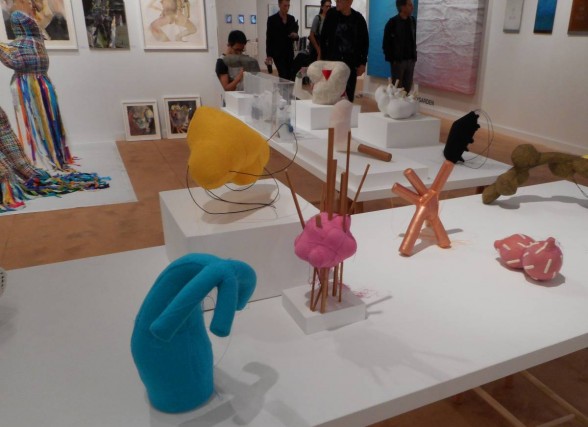
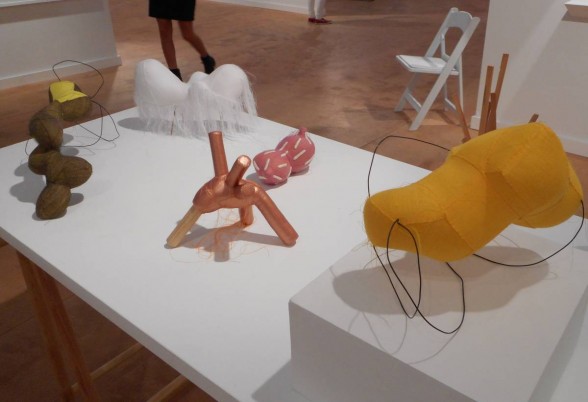
Two long tables at Jack Fischer Gallery (San Francisco) were covered with a group of small, polychrome sculptures in a variety of media, most of which included fabric-covered forms and/or shaggy threads. The artist, Lauren Di Cioccio, is a Philadelphian living in the Bay Area who studied painting, but became interested in textiles as a medium and work in three dimensions.
Behind the tables, three larger, freestanding pieces were made of the sort of strips of cloth that many of us will recall we used to weave potholders at camp. I favor the small works, and found their contrasts of materials appealing: shaped and twisted wire juxtaposed with stuffed cloth forms from which hung scraggly threads, or soft, fabric forms impaled with wooden dowels. All the work was abstract, vaguely biomorphic and revealed a very individual sensibility.
Canan Tolon’s mysterious Mylar paintings
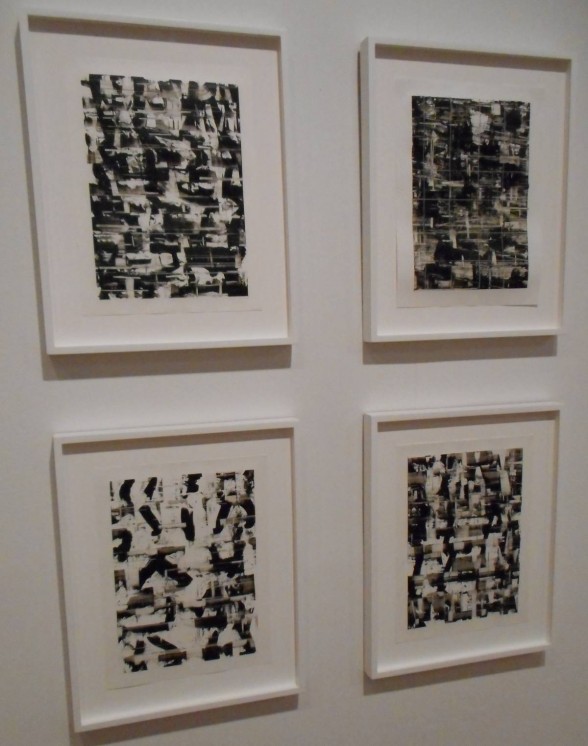
The work at Von Lintel Gallery (L.A.) that drew me in was a group of four, small, black-and-white drawings – at least that’s what they turned out to be. From a distance, they resembled prints of successive film stills, or compressed contact sheets. At close range, Canan Tolon’s work revealed itself as entirely abstract and very much done by hand. The drawings remain intriguing and mysterious as to technique–one that Tolon developed herself.
The Turkish-born artist studied architecture, although she didn’t pursue it, and uses the Mylar found in architects’ offices as a support for oil paint. Mylar isn’t absorbent, as paper is, so paint sits upon it, which the artist manipulates with razor blades and other implements. The works were constructed in dense grids, perhaps an influence of her interest in architecture. Tolon’s work is much in demand, particularly in Turkey, and I was given a very beautiful monograph done in connection with her solo exhibition at Parisol unit foundation, London, earlier this year. It illustrates many more drawings on Mylar, sculpture, and paintings that also have repeated figuration and densely-textured forms that are very seductive. I hope I get a chance to see more of her work before long.


